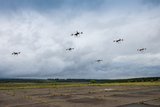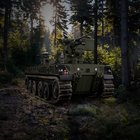Sea Air Space 2011: USN spells out future for Airborne Electronic Attack
The US Navy (USN) will continue to look at integrating its Next-Generation Jammer (NGJ) onto UAVs as it looks to provide an airborne electronic attack (AEA) capability for low-density, high-demand assets, according to officials.
Speaking at the Navy League Sea Air Space exposition in Washington, DC, Capt John Green, programme manager for AEA systems and EA-6B Prowler (PMA 234) described how UAVs would provide the next step beyond the 'threshold' EA-18G Growler and future F-35B AEA variants.
However, Green warned that currently, the E-18G was the only AEA platform with a research and development funding budget. With a view for this airframe to deal with low band operations and the F-35B to operate in medium bands, a shortlist of air vehicles capable of covering high bands had yet to be decided.
To date, the USN has conducted NGJ tests with the US Army's Shadow UAV but Green would not be drawn on naming additional UAVs being considered for the similar usage. However, he conceded that a number of AN/ALQ-99s, originally designed in the 1960s, would still be flying up until 2025 and perhaps beyond.
Although not yet a Program of Record, the USN said it expected an initial fielding of NGJ in 2019 and according to the navy, NGJ comprises a 'subset of overall EW system of systems' rather than a one-stop solution to cover every eventuality, Green explained.
The full spectrum jammer is designed for external carriage with a total of five different pods being developed. Green also described how industry was heading in the direction of using electronically scanned arrays.
However, he warned that weight and drag was an issue that needed resolving: 'It's a killer [issue] today. We need a streamlined pod that does not weigh a lot- it's a balancing act,' he stated.
In July last year, the USN awarded four contracts to joint ventures led by ITT/Boeing; Raytheon; Northrop Grumman; and BAE Systems, which will be reduced to two parties for the Technology Demonstrator phase. Green concluded that a single party would then be downselected for the final development phase.
'Dedicated stand-off jammers including the ALQ-99 and NGJ continue to be central to the navy's AEA strategy and we are moving towards low-density, high-demand issues,' he said.






















